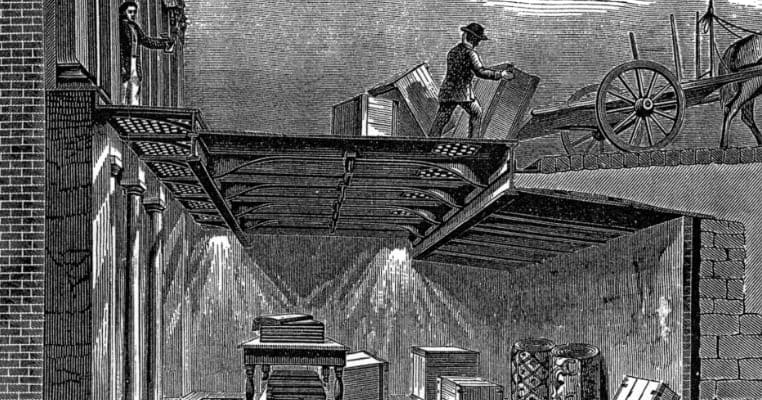Under most cities, you will find sewer systems, rats and possibly a subway train. But if you visit Seattle, there is an entire underground city underneath the streets. In the 1800’s, the original city burned down, and they decided to raise the streets by two stories and build directly on top of it. By no small miracle, the two cities have stayed intact all of these years.

The Great Seattle Fire
The city of Seattle was originally founded in 1851. The founding citizens wanted to build a city right on the beach to give it easier access to travel and trade. The buildings in the original city were all made of wood. This was totally normal at the time, especially in the Pacific Northwest, where trees were plentiful, and it only made sense to use building materials that they had locally.
No one could have guessed that the original city would only last for 38 years before it was completely destroyed in an unexpected catastrophic event. In 1889, a glue maker name Victor Clairmont accidentally started a grease fire. Without knowing any better, Clairmont tried to put the fire out with water, which just made it blow up and get so much worse. (Grease fires need to be put out by snuffing the fire with a lid over the pot, or throwing baking soda on it, but this was not common knowledge at the time.) There was a paint store in the same building upstairs, which made the fire have even more fuel to keep going. Then, a whiskey truck drove by, which caught on fire almost immediately, too. All of this sounds so over-the-top, it almost sounds like a joke, but it really did happen. This series of events caused the fire to end all fires to rage in Seattle.
The town was so young, that the fire department had never actually put out a fire before, and the experienced fire chief was out of town. This caused the only help available to scramble in a panic. They did their best to put the fires out, but the city continued to burn. When the flames were finally put out, the vast majority of the city had been burned to the ground, and 31 blocks were total ash.
No one can be sure how many people died in this fire. The town had no way of keeping records back then, since all of the paper records were destroyed, and it wasn’t exactly a priority. There was a shanty town of homeless people in the outskirts of the city, so people think that the majority of the casualties would have come from the people living there. One good thing that happened was that over a million rats were killed in the process, so at least it cut down on the spread of disease.

The city council decided that from that day forward, every single new building in Seattle needed to be built of brick or stone. This way, if there was ever a fire again, the entire city would not light up like a Christmas tree in a matter of minutes.
However, the wooden buildings were not the only problem with the original layout of the city. After nearly 40 years of living in the city, the council had a whole list of problems that could be improved upon. When the city was first built in 1851, they established it in a floodplain right along the coast line. So after a heavy rain storm, the city streets would flood to the point where people couldn’t get around. Considering that Seattle is one of the most rainy cities in the country, this happened all the time. There was no drainage system, either, which made it impossible to avoid getting wet, growing mold, getting sick, etc.
The city council decided that if they wanted to keep the city in the same spot, the only solution would be to bring in a lot of dirt and raise the streets by 10 feet. As you can imagine, this was a huge undertaking, especially for the time. Citizens did not have the benefit of modern-day dump trucks. This plan was supposed to take 7 to 10 years to even begin the project, because there needed to be a lot of planning and raising money from taxes. In the mean time, people needed to move on with their lives and start working again. So business owners started to rebuild in stone on the ground level, knowing that one day, the buildings would just be demolished all over again.

